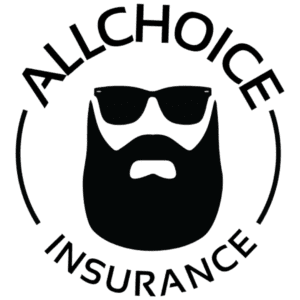Can You Get A Mortgage Without Insurance In Canada?
When it comes to buying a home in Canada, obtaining a mortgage is often a necessary step. However, many homebuyers may be unsure about the role of mortgage insurance in the process.
Mortgage insurance is typically required for homebuyers who have a down payment of less than 20% of the purchase price of the property. But is it possible to get a mortgage without insurance in Canada?
In this blog post, we will explore this question in detail. We will examine what mortgage insurance is, when it is required, and whether there are any alternatives for homebuyers who do not want or need mortgage insurance.
If you are considering buying a home in Canada and want to better understand your options for obtaining a mortgage, read on to learn more
Understanding Mortgage Insurance in Canada
What Mortgage Insurance Is And How It Works In Canada?
Mortgage insurance is a type of insurance that protects lenders in the event that a borrower defaults on their mortgage. In Canada, mortgage insurance is required for homebuyers who have a down payment of less than 20% of the purchase price of the property. This is known as a high-ratio mortgage.
There are two types of mortgage insurance available in Canada: the Canada Mortgage and Housing Corporation (CMHC) and private mortgage insurance. CMHC is a federal government agency that provides mortgage insurance for high-ratio mortgages, while private mortgage insurance is offered by private insurance companies.
When a homebuyer applies for a high-ratio mortgage, the lender will typically require them to obtain mortgage insurance. The cost of mortgage insurance is typically added to the mortgage amount, and the borrower will pay it off over the life of the mortgage.
In the event that the borrower defaults on their mortgage, the lender can file a claim with the mortgage insurer to recoup any losses. The insurer will then work with the borrower to try to resolve the issue and may take over the mortgage if necessary.
Overall, mortgage insurance in Canada helps to reduce the risk for lenders when providing mortgages to homebuyers with smaller down payments. It can also help homebuyers to qualify for a mortgage that they may not otherwise be able to obtain without insurance.
Types Of Mortgage Insurance Available In Canada: Cmhc And Private Insurance
In Canada, there are two types of mortgage insurance available: the Canada Mortgage and Housing Corporation (CMHC) and private mortgage insurance. While both types of insurance serve the same purpose of protecting lenders in the event of borrower default, there are some key differences between them.
CMHC Mortgage Insurance:
CMHC is a federal government agency that provides mortgage insurance for high-ratio mortgages.
High-ratio mortgages are those where the borrower has a down payment of less than 20% of the purchase price of the property.
The cost of CMHC insurance is based on a percentage of the mortgage amount and ranges from 0.6% to 4.50% depending on the down payment amount and the loan-to-value ratio.
CMHC mortgage insurance is often the default choice for homebuyers who need mortgage insurance.
Private Mortgage Insurance:
Private mortgage insurance is offered by private insurance companies.
It is available for both high-ratio mortgages and conventional mortgages (where the borrower has a down payment of 20% or more).
The cost of private mortgage insurance varies depending on the insurer, the size of the down payment, and the loan-to-value ratio.
Private mortgage insurance may be a good option for homebuyers who do not qualify for CMHC insurance or who want to shop around for the best insurance rates.
It is important for homebuyers to understand the eligibility criteria and costs associated with each type of mortgage insurance when deciding which option is best for them. A mortgage professional can provide guidance on the different options and help homebuyers make an informed decision.
What is the Eligibility Criteria For Each Type of Mortgage Insurance?
The eligibility criteria for mortgage insurance in Canada varies depending on the type of insurance being applied for. Here are some key eligibility criteria for the two types of mortgage insurance available in Canada:
CMHC Mortgage Insurance:
Available for high-ratio mortgages where the borrower has a down payment of less than 20% of the purchase price of the property.
The maximum property value eligible for CMHC insurance is $1,000,000.
Borrowers must have a credit score of at least 680.
The maximum debt-to-income ratio is 35%.
Private Mortgage Insurance:
Available for high-ratio mortgages and conventional mortgages (where the borrower has a down payment of 20% or more).
The maximum property value eligible for private mortgage insurance varies depending on the insurer.
Borrowers must have a credit score of at least 600.
The maximum debt-to-income ratio is typically 43%.
It’s important to note that the eligibility criteria for mortgage insurance may change over time and may vary depending on the lender and insurer. Homebuyers should speak with a mortgage professional to determine their eligibility for mortgage insurance and to explore alternative options if they do not qualify for insurance.
Can You Get a Mortgage Without Insurance in Canada?
In Canada, it is possible to get a mortgage without insurance, but it depends on the type of mortgage and the amount of down payment you are able to make.
If you are able to make a down payment of 20% or more of the purchase price of the home, then you will not be required to obtain mortgage insurance. This is because the lender considers you to be a lower-risk borrower since you have a larger stake in the property.
However, if you are not able to make a down payment of at least 20%, you will likely be required to obtain mortgage insurance. This insurance protects the lender in the event that you are unable to make your mortgage payments.
In Canada, there are three main providers of mortgage insurance: Canada Mortgage and Housing Corporation (CMHC), Genworth Financial Canada, and Canada Guaranty. The cost of mortgage insurance varies depending on the size of your down payment and the purchase price of the home.
It is important to note that even if you are required to obtain mortgage insurance, you will still be responsible for paying your mortgage payments in full and on time. Mortgage insurance simply provides an added layer of protection for the lender in the event that you are unable to meet your payment obligations.
Overall, while it is possible to get a mortgage without insurance in Canada, it may not be feasible for all borrowers. It is important to do your research and speak with a mortgage professional to determine the best course of action for your individual financial situation.
Is It Possible To Obtain A Mortgage Without Insurance In Canada?
In Canada, it is possible to obtain a mortgage without insurance, but it is typically only an option for homebuyers who have a down payment of 20% or more of the purchase price of the property. This is known as a conventional mortgage.
When a homebuyer has a down payment of 20% or more, the lender is at a lower risk of losing money if the borrower defaults on their mortgage. As a result, mortgage insurance is not typically required for these types of mortgages.
However, it is important to note that there are still eligibility criteria and requirements that must be met in order to obtain a mortgage without insurance. For example, the borrower must still have a good credit score, stable employment, and a reasonable debt-to-income ratio.
It’s also important to consider the potential costs of not having mortgage insurance. Without insurance, the lender may charge a higher interest rate or require a larger down payment to mitigate their risk. Homebuyers should carefully consider their options and work with a mortgage professional to determine the best approach for their individual situation.
The Circumstances In Which A Homebuyer May Not Need Mortgage Insurance
In Canada, a homebuyer may not need mortgage insurance in certain circumstances. Here are a few examples:
20% or more down payment: If the homebuyer has a down payment of 20% or more of the purchase price of the property, they may not need mortgage insurance. This is known as a conventional mortgage. Lenders typically consider these mortgages to be less risky, as the homebuyer has a larger stake in the property and is less likely to default on their mortgage.
Self-insured mortgage: Some lenders offer self-insured mortgages, where the borrower pays a fee or sets aside funds to cover the lender’s potential losses in the event of default. This is typically only an option for borrowers with a strong credit history and a significant down payment.
Assumable mortgage: In some cases, a homebuyer may be able to assume the existing mortgage on a property, meaning they take over the payments without having to obtain new financing. This may be an option if the seller has a mortgage with a low interest rate or if the homebuyer is unable to obtain new financing.
It’s important for homebuyers to carefully consider their options and work with a mortgage professional to determine whether mortgage insurance is necessary and which type of insurance may be best for their individual situation. Ultimately, the goal is to find the most affordable and sustainable mortgage solution while minimizing risk for both the borrower and the lender.
Downsides Of Not Having Mortgage Insurance
While it is possible to obtain a mortgage without insurance in Canada, there are potential downsides to consider. Here are a few:
Higher interest rates: Lenders may charge a higher interest rate for mortgages without insurance to compensate for the increased risk they are taking on. This can result in higher monthly mortgage payments and a higher overall cost of borrowing.
Larger down payment: Without mortgage insurance, lenders may require a larger down payment to reduce their risk. This can make it more difficult for homebuyers to qualify for a mortgage or afford the upfront costs of purchasing a home.
Limited options: Not all lenders offer mortgages without insurance, which can limit the homebuyer’s options when it comes to choosing a lender or a mortgage product.
Limited property value: Without mortgage insurance, lenders may have restrictions on the maximum property value they are willing to finance. This can limit the homebuyer’s options when it comes to choosing a home in their desired location or with the desired features.
It’s important for homebuyers to weigh the potential downsides of not having mortgage insurance against their own financial situation and goals. Working with a mortgage professional can help ensure that the homebuyer understands all of their options and chooses the best mortgage product for their individual needs.
Alternatives to Mortgage Insurance
Alternatives To Mortgage Insurance In Canada
In Canada, there are potential alternatives to mortgage insurance that may be considered by homebuyers who do not want to pay for insurance premiums or who do not meet the eligibility criteria for mortgage insurance. Here are a few examples:
Co-signers: A co-signer is someone who agrees to take on responsibility for the mortgage if the borrower is unable to make their payments. Having a co-signer can help borrowers who may not qualify for a mortgage on their own, such as those with a lower credit score or less stable employment history.
Larger down payments: As previously mentioned, a larger down payment can help mitigate risk for the lender and may reduce or eliminate the need for mortgage insurance. Homebuyers can consider saving up for a larger down payment to increase their chances of qualifying for a conventional mortgage.
Second mortgages: In some cases, a homebuyer may be able to obtain a second mortgage to cover a portion of the down payment or purchase price of the property. This can help reduce the amount of financing required from the primary lender and may eliminate the need for mortgage insurance.
Negotiating with lenders: Homebuyers can work with lenders to negotiate the terms of their mortgage, such as the interest rate or down payment requirements. It may be possible to obtain more favorable terms by demonstrating a strong financial history or by having a higher income or net worth.
It’s important for homebuyers to carefully consider their options and work with a mortgage professional to determine the best approach for their individual situation. Ultimately, the goal is to find the most affordable and sustainable mortgage solution while minimizing risk for both the borrower and the lender.
The Pros And Cons Of Each Alternative
Each alternative to mortgage insurance in Canada has its own pros and cons. Here are a few to consider:
Co-signers:
Pros:
Can help borrowers who may not qualify for a mortgage on their own
May allow for a lower interest rate or more favorable terms
Can help borrowers build their credit history
Cons:
Co-signers are responsible for the mortgage if the borrower defaults
Can strain relationships if the borrower is unable to make their payments
May be difficult to find someone willing to co-sign
Larger down payments:
Pros:
May eliminate the need for mortgage insurance
Can help borrowers qualify for a conventional mortgage with a lower interest rate
Can reduce the overall cost of borrowing
Cons:
May require significant savings or delay the homebuying process
May limit the homebuyer’s options when it comes to choosing a home
Can strain the borrower’s finances if unexpected expenses arise
Second mortgages:
Pros:
Can help reduce the amount of financing required from the primary lender
May offer more favorable terms than mortgage insurance
Can help borrowers who do not have a large down payment saved up
Cons:
Interest rates on second mortgages are typically higher than on primary mortgages
Can result in higher monthly payments and overall cost of borrowing
May limit the homebuyer’s options when it comes to choosing a home
Negotiating with lenders:
Pros:
Can result in more favorable terms than initially offered
Can help borrowers save money over the life of the mortgage
May help borrowers who do not qualify for mortgage insurance or who cannot afford a larger down payment
Cons:
May require strong negotiation skills or a mortgage professional to help
May not result in significant savings or better terms
Can be time-consuming and delay the homebuying process
It’s important for homebuyers to carefully weigh the pros and cons of each alternative and to work with a mortgage professional to determine the best approach for their individual situation.
Tips For Homebuyers Who Are Considering Purchasing A Home Without Mortgage Insurance
If you’re considering purchasing a home without mortgage insurance in Canada, here are a few tips to keep in mind:
Save up for a larger down payment: A larger down payment can help reduce the risk for the lender and may eliminate the need for mortgage insurance. Consider saving up for a down payment of at least 20% of the purchase price to qualify for a conventional mortgage.
Work with a mortgage professional: A mortgage professional can help you understand your options and guide you through the homebuying process. They can also help you negotiate with lenders and find the best mortgage solution for your individual situation.
Consider co-signers or second mortgages: If you’re unable to save up for a large down payment, consider exploring alternatives such as co-signers or second mortgages. However, keep in mind the potential downsides and risks associated with these options.
Shop around for the best mortgage rates: Even without mortgage insurance, it’s still important to shop around for the best mortgage rates and terms. Compare offers from multiple lenders and negotiate to ensure you’re getting the most affordable and sustainable mortgage solution.
Be realistic about your budget: Purchasing a home without mortgage insurance may require a larger down payment, higher interest rates, or other trade-offs. Be realistic about your budget and consider the long-term costs of homeownership before making a decision.
By following these tips and working with a mortgage professional, you can make an informed decision about whether to purchase a home with or without mortgage insurance in Canada.
Conclusion
In conclusion, obtaining a mortgage without insurance in Canada is possible but it depends on various factors such as the type of mortgage and the amount of down payment. If a borrower is able to make a down payment of 20% or more of the purchase price of the home, they may not be required to obtain mortgage insurance as they are considered lower-risk borrowers.
However, if a borrower is unable to make a down payment of at least 20%, they will likely be required to obtain mortgage insurance which protects the lender in the event of default on mortgage payments. Canada has three main providers of mortgage insurance, namely Canada Mortgage and Housing Corporation (CMHC), Genworth Financial Canada, and Canada Guaranty, and the cost of mortgage insurance depends on the size of the down payment and the purchase price of the home.
It is important to note that even with mortgage insurance, borrowers are still responsible for making their mortgage payments in full and on time. Mortgage insurance simply provides an added layer of protection for the lender in case the borrower is unable to meet their payment obligations.
In the end, whether or not to obtain mortgage insurance depends on the borrower’s financial situation, risk tolerance, and ability to make a down payment. It is essential for potential homebuyers to research and consult with mortgage professionals to determine the best course of action for their individual circumstances.
Overall, while it may be possible to get a mortgage without insurance in Canada, it may not be practical for many borrowers. It is crucial to carefully evaluate all options and seek expert advice to make an informed decision that aligns with one’s financial goals and circumstances.



